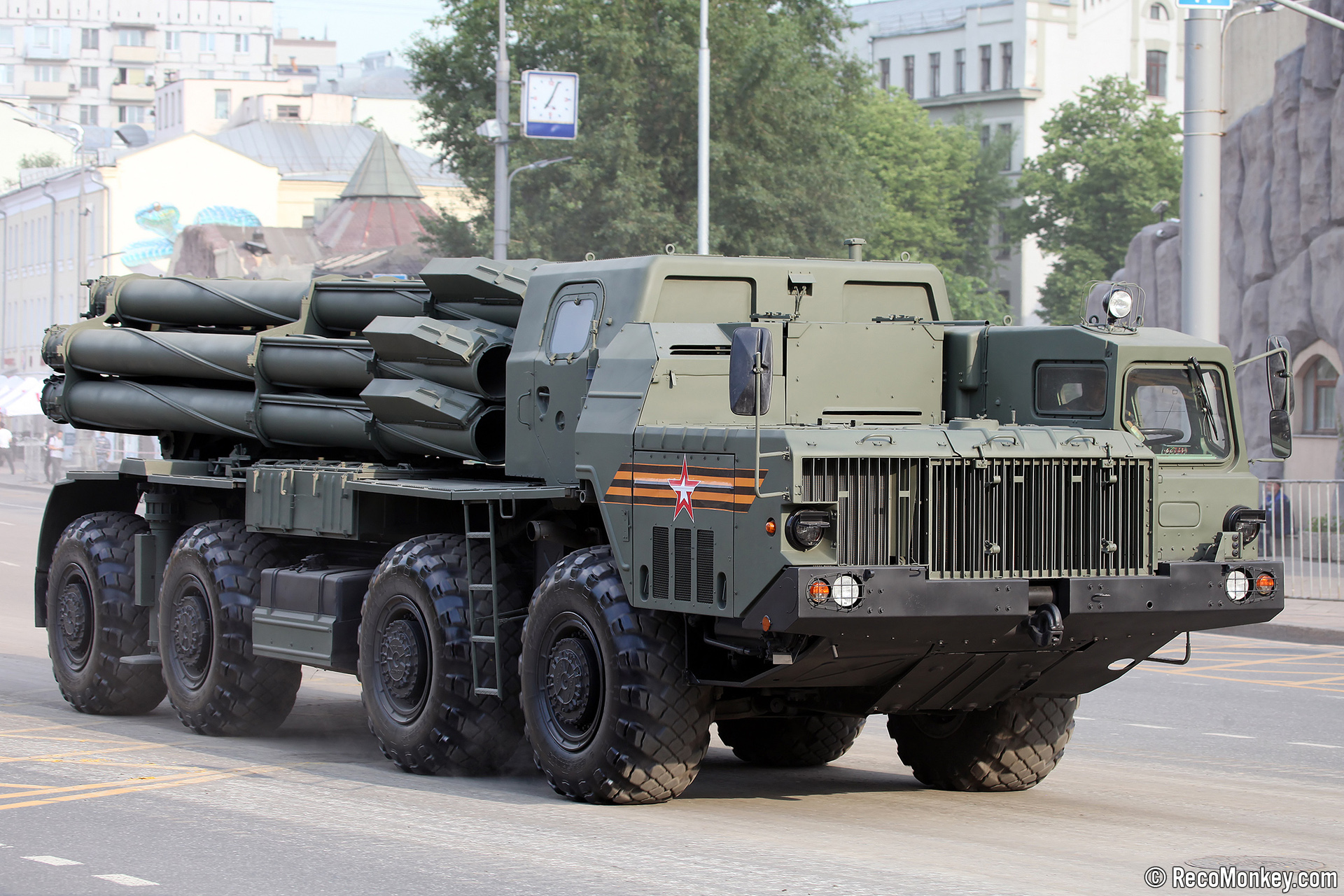The Russian Army could get a new robotized multiple launch rocket system (MLRS) that is under development and can be operated manually or remotely.
China Confirms Pressing J-20 Mighty Dragons Into Action; Fighter Pilot Says Can Search & Track All Stealth Jets
“We are working on the robotization of a promising multiple launch rocket system. This will make it possible to exclude the presence of the crew of the combat vehicle in the danger zone, while we will also retain the ability to control the MLRS by a person from the cockpit of the combat vehicle,” Vladimir Pimenov, General Director of VNII Signal, part of Rostec High-Precision Systems Holding Company told Sputnik.
Pimenov also said that the company is working on a robotization kit for the regular BMP-3 infantry fighting vehicle.
The new MLRS will be the first robotic weapon of this type in the Russian military, reported Sputnik. However, it will not be completely automated, according to Pimenov, who explained that a “full” robotization of such an MLRS is inappropriate since its technical characteristics inevitably decrease in unmanned mode.

It is not clear which MLRS system Pimenov was referring to. Still, Russia’s plan to ‘robotize’ its MLRS is not new. According to previous reports, the robotization in the new MLRS could be based on Russia’s Tornado-G and Tornado-S MLRS.
In 2018, the CEO of NPO Splav, a leading Russian manufacturer of MLRS systems, told Sputnik that “Tornado-G and Tornado-S have already implemented components which can become the foundation for a promising robotized MLRS.”
Automation In Tornado G And Tornado-S MLRS
The Tornado G is a 122mm MLRS, and a successor to the Soviet-era Grad MLRS, whereas the Tornado S is a 300mm upgraded MLRS intended to replace the aging Cold War-era BM-37 Uragan and BM-30 Smerch MLRS systems.
Smirnov explained that adding the new components “allows us to automate the preparation process, and to control the guidance of the launch package, and the firing itself, and to carry out automatic topographic positioning and orientation of the combat vehicle on the ground, to remotely enter flight mission data into the fuses and launch projectiles without the crew having to leave their cabin.”

He most probably referred to the 1V181 and 1V198 automated guidance and fire-control systems produced by VNII Signal for the Tornado-G MLRS.
These systems provide complete automation of fire control for up to four artillery batteries of up to eight guns of various types, with autonomous target identification, firing at the target, and anti-fire maneuvers.
The system is said to be capable of determining and hitting the target consistently from two or more positions with an accuracy of 10 meters.
Last night, russian troops attacked #Mykolaiv with MLRS Tornado-S.
Three apartments in a block of flats were destroyed. One person was wounded. pic.twitter.com/XMB30dyEZR— Alex Senkevich (@senkevich_alex) May 25, 2022
According to the Rostec corporation, using 1V198 increases firing accuracy by 30%, and with new generation guided projectiles, the probability of hitting a target is 0.98-0.99.
The system includes command and observation vehicles 1V1003 based on BTR-80 and commands and staff vehicles 1V1004 based on Ural vehicles.
Russia-Ukraine War Highlights Importance Of MLRS
The automation of MLRS could enable the Russian military to minimize the loss of life while simultaneously increasing the system’s overall efficiency in terms of accuracy and rate of fire.
The importance of MLRS has already been highlighted by the ongoing Russia-Ukraine war, where in the initial months of the war, the Russian military was devasting several Ukrainian positions with its MLRS like TOS-1A, the BM-27 Uragan, etc. until Ukraine introduced the HIMARS MLRS provided by the US.
Russian Orlan-10 UAV footage reportedly of TOS-1A thermobaric MLRS strikes on Ukrainian positions. https://t.co/k24TWVaDIzhttps://t.co/AdjlkxVvLG pic.twitter.com/SANGodXugp
— Rob Lee (@RALee85) May 16, 2022
The HIMARS has proven very effective for the Ukrainian forces, who have used them to destroy key Russian command centers, ammunition stockpiles, and supplies.
According to estimates by US Intelligence, Ukrainian forces have used the HIMARS to take out more than 100 “high-value” Russian targets.
Furthermore, HIMARS also plays a significant role in Ukraine’s counter-offensive to take back the Russian-occupied Kherson region. The Ukrainian military has been using HIMARS to strike crucial river crossings across the Dnieper River.
Video recorded by locals showing an #Ukrainian attack on the Antonovsky bridge in #Kherson last night using MLRS "Himars" to hit the bridge. Video indicates #Russian #air defense shot down 13 #HIMARS missiles while five missiles managed to hit the target . pic.twitter.com/pqm1BeGHLk
— Ninjamonkey ?? (@Aryan_warlord) August 14, 2022
So far, two primary bridges essential for the Russian forces to resupply their troops across the Dnieper River have reportedly been rendered inoperable due to repeated shelling by the Ukrainian troops using HIMARS, according to the latest intelligence update by the British Ministry of Defense.
Latest Defence Intelligence update on the situation in Ukraine – 13 August 2022
Find out more about the UK government's response: https://t.co/icdVutdq7e
?? #StandWithUkraine ?? pic.twitter.com/Kr4S3qEqJA
— Ministry of Defence ?? (@DefenceHQ) August 13, 2022
The Russian Army has now been forced to use pontoon bridges and a ferry to resupply its troops on the other side, per the satellite images that surfaced on social media.
- Contact the author at tanmaykadam700@gmail.com
- Follow EurAsian Times on Google News




